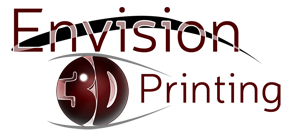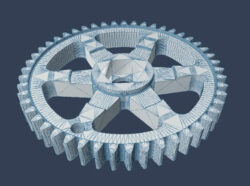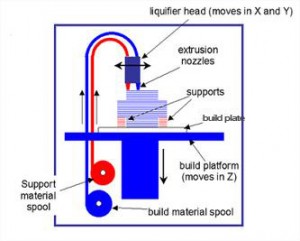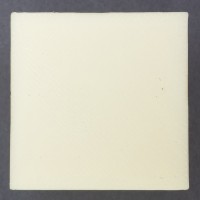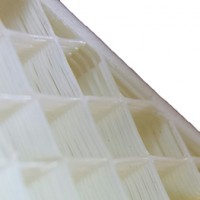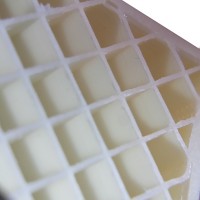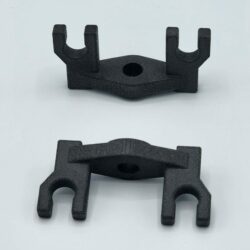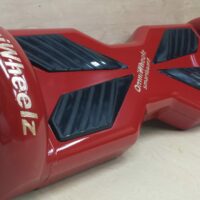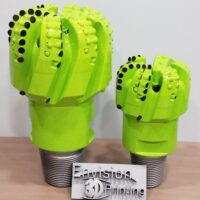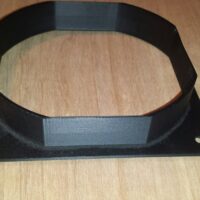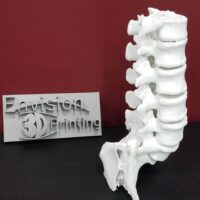For many, 3D printing is a mysterious technology. While 3D printing, also known as additive manufacturing or rapid prototyping, has technically been around since the 1980s, it’s only been readily accessible to most of the public for the last decade or so. Many people who seek 3D printing services therefore don’t fully understand the 3D printing process. At Envision 3D Printing, educating our customers is as important as producing the highest quality 3D printed products for them, so we wrote this article to make it easier to understand the technology.
3D Printing Files
All About 3D Models
First thing’s first: before anything can be 3D printed, you need a 3D model. A 3D model is a mathematical representation of a three-dimensional object. But don’t worry—you don’t have to do the math! Since 3D printers need to “see” all dimensions of the object they’re printing, your amazing sketch of a brilliant new idea that you drew on a napkin at 3 a.m. can’t be 3D printed as is. First someone has to draw up that sketch in some type of computer aided design (CAD) or other 3D modeling software.
3D modeling software uses points, lines, and polygons to tell the 3D printer what the object’s size, shape, and texture are. Then the 3D printing files created by the software, such as STL or STP files, translate the information from the 3D model to the 3D printer. Obtaining files created from 3D modeling software is therefore a critical part of the 3D printing process.
How to Get 3D Print Files
Our B2B clients typically use engineering design teams to create 3D printing files. However, some of our individual customers are frustrated to learn they missed this important step. Open-source databases, such as Thingiverse, offer many common 3D printed files. These file downloads aren’t always perfect, but they’re a great, inexpensive start. Our 3D printing experts will let you know if there are any problems with the file—such as points not touching—that would prevent the object from printing properly.
Alternatively, Envision 3D Printing offers 3D scanning and reverse engineering services at an additional cost for when you need help creating a 3D model for more complex parts. Give us a call or send us an email for a quote.
3D Printing Process Types
Now that you’ve got your 3D print file, you need to know what your 3D printing options are. There are seven main types of 3D printing processes and over 20 subtypes. The main types are:
- Material extrusion: The 3D printer extrudes material through a nozzle.
- Vat polymerization (resin 3D printing): The 3D printer selectively cures photopolymer resins in a vat using a light source.
- Powder bed fusion: The 3D printer melts powder particles with a thermal energy source to build a solid object layer by layer.
- Material jetting: The 3D printer deposits and cures tiny droplets of material on a build plate.
- Binder jetting: The 3D printer sprays a liquid bonding agent to bind regions of a layer of powder.
- Directed energy deposition: The 3D printer feeds and fuses metal material using powerful energy as the material is deposited.
- Sheet lamination: The 3D printer stacks and laminates thin sheets of material together to produce a 3D stack, then cuts them mechanically or with lasers to form the final shape.
3D Printing Processes Envision 3D Printing Offers
Envision 3D Printing currently provides three of these 3D printing types to our customers using our four professional-grade 3D printers:
- Our Stratasys F370 and Stratasys 380mc 3D printers employ the material extrusion process.
- The Formlabs Form 2 3D printer produces beautiful resin products through the vat polymerization process.
- Our latest 3D printer, the Formlabs Fuse 1+, creates plastic 3D printed parts with powder bed fusion technology.
As noted above, there are lots of 3D printing process subtypes, so we’ll focus on the ones we use daily to provide the best 3D printed parts to our customers.
Material Extrusion Process
The material extrusion 3D printers Envision 3D Printing owns use fused deposition modeling (FDM) to extrude a variety of thermoplastics onto a build sheet. These days, FDM is sometimes called fused filament fabrication (FFF). The terms mean the same thing.
Scott Crump first patented FDM technology in 1989. Scott and his wife Lisa founded Stratasys the same year. When we launched Envision 3D Printing in 2015, we started with Stratasys 3D printers because Stratasys remains the leader in FDM technology. The F370 and 380mc 3D printers produce reliably consistent, high-quality parts, yielding superior results for our customers.
We currently offer FDM parts made with:
- ASA
- ABS-ESD7
- ABS-M30
- ABS-M30i
- Nylon 12
- PC
- PC-ABS
- PC-ISO
- TPU-92A (flexible thermoplastic urethane)
- Diran 410MF07
Simple Process Using Complex Technology
The FDM principle used for rapid prototyping services is relatively simple. The 3D printer extrudes thermoplastic filament through an extrusion tip onto a build sheet, layer by layer, tracing the shape of each layer, and then filling in the geometry. Depending on part geometry, support material is sometimes also extruded to prop up features to prevent extruding into air.
After the part is completed, any support material is dissolved in a specially designed wash tank. This dissolvable support structure allows us to print assemblies with moving parts.
Though the process might seem relatively simple, both the software needed to process the files and the machines that create the parts are highly complex. The latest production series Stratasys equipment is based on many years of development, producing sophisticated machines that fabricate the best FDM parts on the market.
FDM Part Variations
FDM parts can be built with the following property variations:
- Solid: The machine traces the outline of the geometry, then fills the interior before proceeding to the next layer.
- Sparse fill: The machine traces the outline of the geometry with two contours. It then completes the interior with unidirectional diagonal lines, alternating direction on each layer to create a crosshatch weave pattern.
- Double-dense sparse fill: The machine traces the outline of the geometry with two contours, then completes the interior with bidirectional diagonal lines on the same layer. This creates a stronger part since there are no gaps between the diagonal lines.
- Wall thickness variations: The wall thickness can be varied by adjusting the width and number of contours. This allows reinforcement of areas around features that will be post-processed (e.g., drilled or tapped).
Vat Polymerization Process
The vat polymerization (resin 3D printing) technology Envision 3D Printing uses is stereolithography (SLA). SLA was the first 3D printing technology ever developed. Charles Hull invented the SLA process in 1981 and patented it in 1986. Chuck, a furniture builder, wanted an easier way to produce small custom parts. Creating custom parts is still a great use for SLA 3D printing today.
SLA 3D printers, such as our Formlabs Form 2 3D printer, incorporate galvanometers (galvos) on the X-axis and the Y-axis. These galvos direct laser light from the back of the 3D printer to a mirror that delivers the beam to the print plane. The 405 nm wavelength laser beam cures a cross-section of the 3D printed object inside the build envelope, building the object up layer by layer. As each layer is cured, the galvos move almost imperceptibly up to pull out the hardened resin layer and make room for the next liquid layer to be cured by the laser.
This short video, shot at the Envision 3D Printing office, shows a single layer of the vat polymerization process using our Formlabs Form 2 resin 3D printer.
Envision 3D Printing offers resin 3D printing using standard, engineering, jewelry, and dental resins.
Powder Bed Fusion Process
The subtype of powder bed fusion (PBF) technology Envision 3D Printing offers is selective laser sintering (SLS). Carl Deckard created this 3D printing technology as an undergrad at the University of Texas and patented it in 1988.
SLS fuses powders, rather than liquids, with a laser. Parts built with SLS technology possess excellent strength, wear resistance, and durability mechanical properties. Consequently, SLS is a great choice for applications in consumer products, machinery, and tooling.
SLS 3D printers, such as the Formlabs Fuse 1+ 3D printer recently acquired by Envision 3D Printing, spread thermoplastic powders in a thin layer over the print bed. The digital model lays out a pattern. Then a laser traces the pattern over the powder and fuses specific points on the layer. The print bed then lowers by one layer height and repeats the process. The process repeats until the 3D printed object is complete. When printing is complete, the final product is encased and supported in unfused powder.
Advantages of the SLS 3D printing process include the mechanical properties mentioned above as well as fast print speeds, supportless 3D printing, and the ability to recycle unused thermoplastic powder. With a minimum print layer height of 110 microns, the Fuse 1+ produces parts with precision detail and excellent surface quality.
Envision 3D Printing offers SLS printing using Nylon 12 powder.
Benefits of Understanding the 3D Printing Process
3D printing offers a wide array of uses for businesses and individuals alike. Whether you need a prototype of your latest invention developed to get funding from the sharks on Shark Tank, want stunning tradeshow models for the Offshore Technology Conference (OTC), are reproducing a car part that’s no longer manufactured, or designed a model to show the jury what really happened (yep, we’ve done all of those—and plenty more!), understanding the 3D printing process helps you know what to expect when you contact us.
